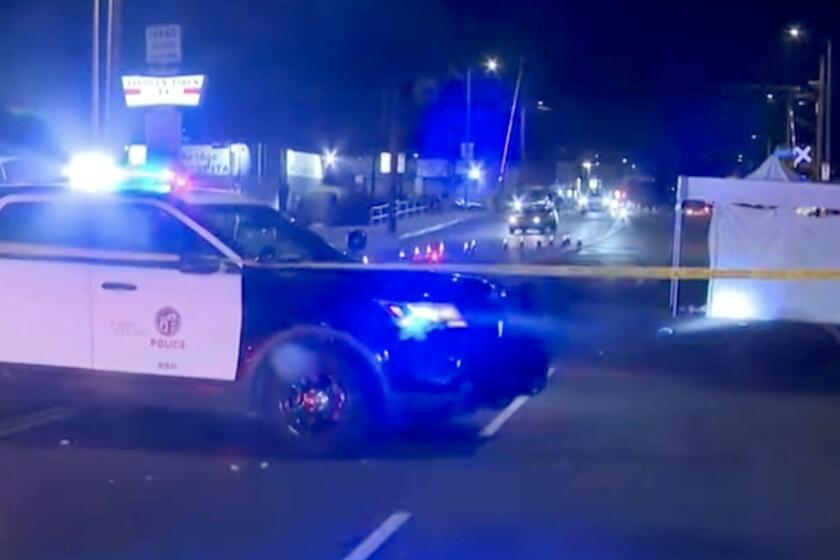L.A. County sheriff’s deputies taking longer to respond to emergencies
Los Angeles County sheriff’s deputies are getting to the scenes of 911 emergencies significantly later than they were before budget cuts last March, according to a recent analysis of Sheriff’s Department records.
Last month, response times were a full minute longer compared with their 2009 average.
Department officials say they can’t definitively link the lag to budget cuts, but whatever the cause, they say delays in emergency situations can have a major effect on law enforcement outcomes.
“Seconds count,” said Capt. Mike Parker. “When people call for help, they want us to be there right away. There have been lots of calls where I was really glad I was there when I was, and not five seconds later.”
Since the department moved to cut its budget by $128 million six months ago, response times have consistently been longer than they were last year. The delays affect a massive jurisdiction that includes three-fourths of Los Angeles County and approximately 4 million residents.
In a recent report to the county Board of Supervisors, Sheriff Lee Baca listed the lag as a possible effect of cuts to overtime — but in an interview, he said other factors, such as a surge in 911 calls, might be at play.
“It’s not something to shrug off,” Baca said. “We have to watch it and if our response to emergencies continues extending, we could come to a tipping point. I think we’re still at the front end … but we’re inching up to it.”
Baca said deputies are often the first on the scene in shootings, stabbings and other situations in which timeliness can save lives.
The delays have alarmed the county board. To stem the increase in response times, a budget measure by Supervisor Michael D. Antonovich would provide the department an additional $2.6 million to be used specifically for patrols in the county’s unincorporated areas.
Budget cuts have directly resulted in problems elsewhere in the department. For example, the crime lab has a growing backlog in the collection and analysis of fingerprint evidence. That slowdown has resulted in the destruction of evidence in about a tenth of new burglary cases and delays in dozens of homicide investigations.
In another result of cost cutting, 200 inmates were recently released early from the L.A. County jail system. Time spent in custody for male misdemeanor offenders has dropped from 80% of their sentences to 35%.
Last year, average response time for 911 calls was 4.9 minutes. The month after budget cuts began, the average climbed to 5.5 minutes and last month rose to almost six minutes. Routine calls for service have also slowed.
Baca said that despite the lag, violent crime in the department’s patrol areas is down. Recent department crime statistics show that the homicide rate in patrol areas countywide was the lowest since 1975.
Still, Baca said, the response slowdown has to be addressed because deputies often arrive before ambulances and sometimes even transport assault victims to hospitals in their patrol cars.
“If it’s a call for a person injured, typically shot or stabbed, it can be rather critical to lose a minute in response,” Baca said. “It concerns me tremendously.”
Parker said the cause of the delays could be the budget cuts or a variety of other factors. He speculated that administrative staff taking on shifts in patrol stations as part of an effort to limit overtime costs may be less familiar with the territory, taking longer to arrive at the scenes of emergencies.
“It’s impossible to have cuts like this and not have impacts,” Parker said. “The question is how deep is that impact and is that the only reason.”
robert.faturechi@latimes.com
More to Read
Sign up for Essential California
The most important California stories and recommendations in your inbox every morning.
You may occasionally receive promotional content from the Los Angeles Times.











